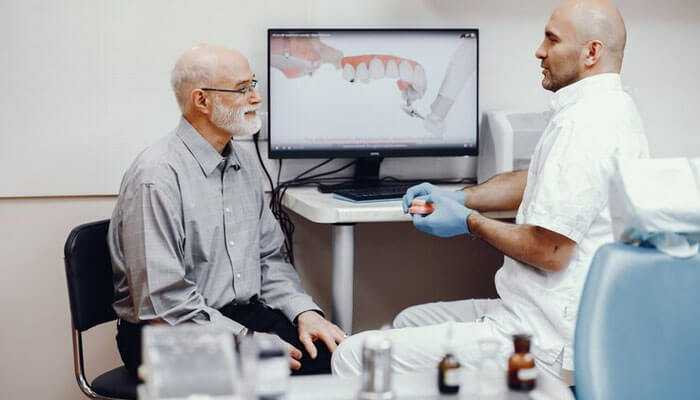In dentistry’s fast-paced and ever-evolving world, effective patient communication is a linchpin in providing top-tier patient care. Gone are the days of simple phone calls and postcards; today, patients expect real-time interactions that are personalized, convenient, and secure. As a dental professional, it’s essential to leverage technology that provides these experiences and optimizes your practice’s efficiency and performance. This comprehensive guide delves into Dental Patient Communication Software (DPCS), illustrating its undeniable benefits and providing actionable insights for its successful implementation in your dental practice.
The Critical Role of Communication in Dentistry
Dentistry is not just about the technical expertise in oral health; it’s a service grounded in the trust and comfort of the patient. Effective dental patient communication is a core component that can enhance this relationship. From the initial appointment scheduling to post-treatment follow-ups, the way you interact with your patients influences their overall experience and, consequentially, your practice’s reputation.
In the digital age, dental patient communication has been amplified and diversified. Patients seek instant responses, and the practitioner they choose often delivers the best communication. Let’s explore how dental patient communication software transforms these principles into actionable software solutions that uplift patient care and practice management.
Choosing the Right Dental Patient Communication Software
The process starts with selecting the right DPCS for your practice. Features vary between platforms, so choosing one that aligns with your unique practice needs is essential.
Some critical factors to consider include the scalability of the software (can it grow with your practice?), its compatibility with your current technology ecosystem, and the level of support and training that the vendor offers. To ensure a comprehensive solution, you’ll also want to look at features like appointment scheduling, dental billing software, and multi-channel messaging capabilities.
The Benefits of Dental Patient Communication Software
Streamlining Appointment Scheduling
Gone are the days when a receptionist would spend considerable time coordinating patient schedules. Today’s DPCS enables a seamless, real-time scheduling process. Patients can easily book appointments online, and the software automatically updates your schedule—no more double-bookings or lost opportunities.
Automated Appointment Reminders
Missed appointments result in wasted time and lost revenue. DPCS combats this by sending automated reminders via patients’ preferred communication channels—email, text, or even voice calls. This reduces no-show rates and ensures your practice’s schedule runs like a well-oiled machine.
Efficient Patient Communication Channels
Patients often have questions before and after their visits. DPCS facilitates easy-to-reach communication channels that allow them to contact your practice at their convenience. This can be a major differentiator for your practice, especially in emergencies or when patients must reschedule provisionally.
Enhanced Patient Engagement and Satisfaction
Improved communication translates to higher patient engagement. With DPCS, you can share educational materials, post-treatment instructions, and personalized messages showing you care beyond the chair. High satisfaction levels lead to patient loyalty and valuable word-of-mouth referrals.
Features That Matter in a DPCS
When selecting a DPCS for your practice, looking for features that align with your practice’s unique needs is crucial. Here are some core features you shouldn’t compromise on:
Appointment Management Capabilities
The software should offer a robust appointment management system that is intuitive for patients and staff. Look for tools that allow you to set different types of appointments, customize time slots, and monitor real-time availability.
Customizable Messaging Options
Each practice has its tone and style. DPCS, which allows for customizing outgoing messages, can help maintain consistency in your brand’s communication. Moreover, ensure it supports multiple languages to cater to a diverse patient base.
Seamless Integration with Practice Management Systems
Compatibility is key. DPCS that integrates smoothly with your existing practice management system saves time and reduces errors. It should update patient records, insurance information, and billing details in real time.
Secure Patient Data Handling
Adherence to HIPAA and other data protection standards is non-negotiable. The software should be secure, and the vendor should be transparent about their data handling processes and policies.
Implementation Tips for Dental Professionals
Adopting new technology can be daunting. Here’s a step-by-step guide to smooth implementation:
Selecting the Right Software
Involve your team in the selection process. They can offer insights and highlight the most useful features in their day-to-day work.
Preparing for Integration
Before the software goes live, ensure your practice can integrate it seamlessly. This might involve restructuring workflows or upgrading systems.
Training and Support
The success of DPCS hinges on how well your staff can use it. Provide comprehensive training and ongoing support. Having a staff member be an in-house expert who can address day-to-day queries is also beneficial.
Launch and Evaluation
Launch a strategic communication plan to inform patients about the new system when you’re ready. As you use the software, gather feedback from your patients and staff. Continuous improvement is key to maximizing the benefits of DPCS.
Conclusion
Patient communication software is not just an enhancement; it’s a necessity in modern dental practices. It empowers practitioners to provide personalized, efficient, and secure communication that resonates with today’s patients. Ultimately, DPCS is about humanizing the digital experience, placing empathy and convenience at the forefront of dental care.
For those ready to leap, the right DPCS can be transformative. It streamlines day-to-day operations and cultivates a reputation for patient-centric care. As you consider your options, remember that the best software is the one that serves as an extension of your commitment to your patients’ oral health journey.



